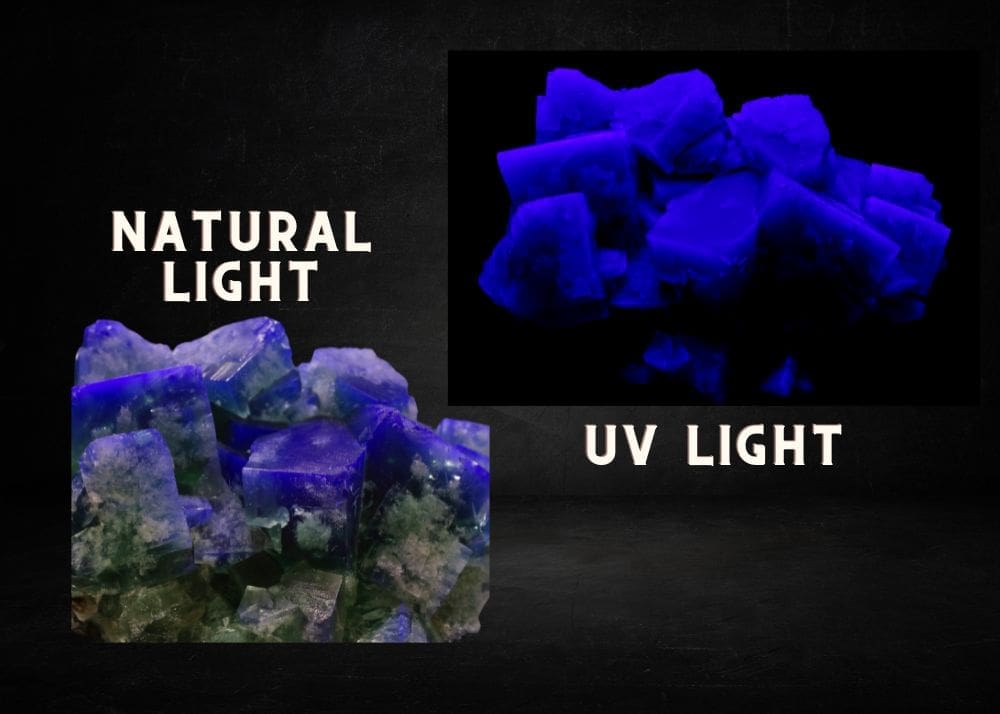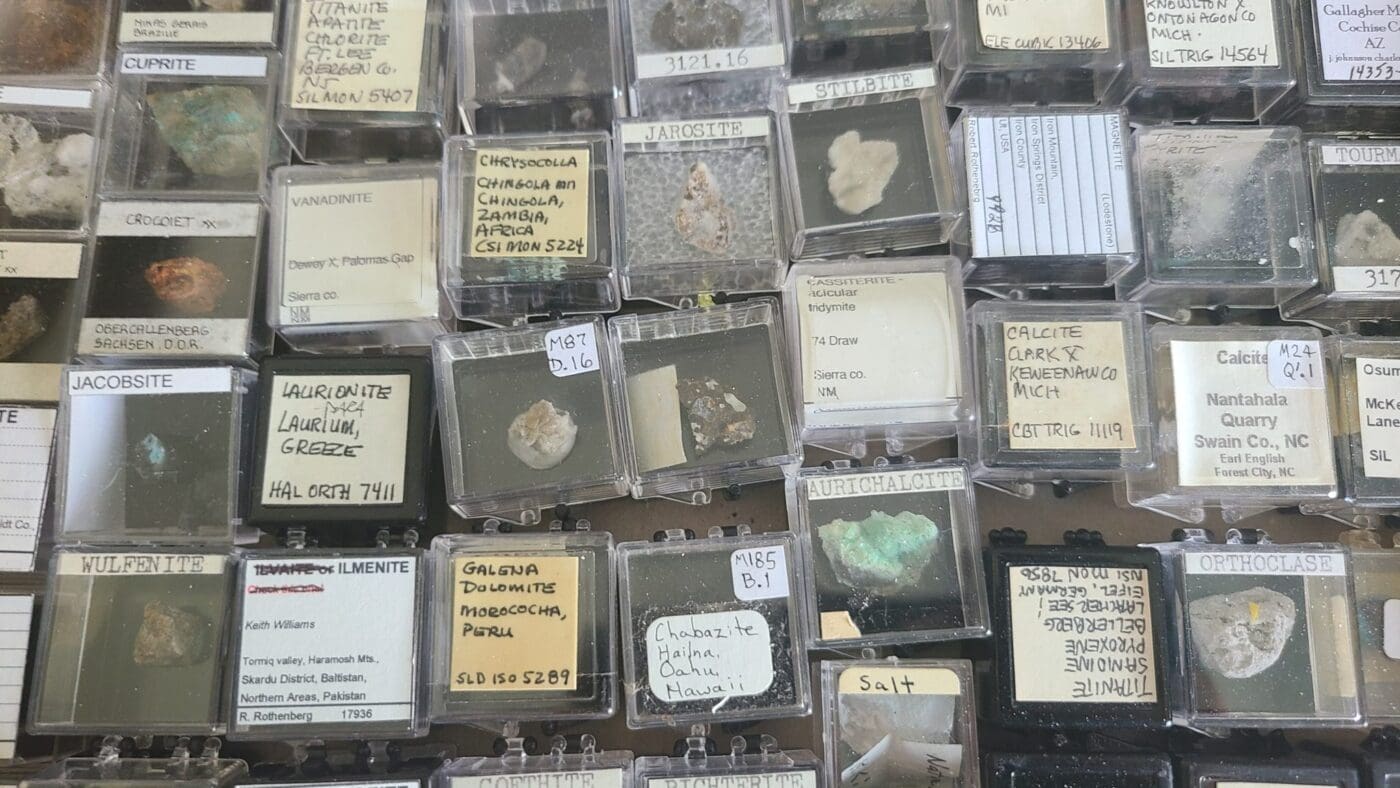Introduction: The Phenomenon of Mineral Color Transformation
The realm of mineralogy is rich with wonders, and among them is the enigmatic ability of certain minerals to change colors, known as reversible color. This remarkable phenomenon is not only a subject of profound interest for collectors and enthusiasts but also a portal to understanding the intricate interactions between minerals and light.
What is Reversible Color?
Reversible color is the phenomenon where minerals change their color when exposed to different types of light or when the lighting conditions change. One of the most striking examples is hackmanite, a mineral that can transition from colorless to shades of pink and deep violet when exposed to sunlight, only to revert to its original state afterward.
Hackmanite: The Chameleon of the Mineral Kingdom
Hackmanite, particularly from Bancroft, Ontario, exemplifies reversible color with its incredible ability to change hue. When held before a strong electric light, hackmanite’s color disappears rapidly and almost completely, showcasing its photosensitive nature. This mineral belongs to the sodalite group, known for its rich play of colors.
The Wonders of Photosensitivity in Minerals
The reversible photosensitivity observed in minerals like hackmanite is a natural wonder that has captivated humans for centuries. The transformation is temporary and can be observed repeatedly, a characteristic that has significant implications for both scientific research and technology.
Examples of Color-Changing Minerals
Below is a table highlighting some remarkable minerals known for their reversible color properties, including where they are found and interesting facts about each:
| Mineral | Color Change | Location | Notes |
|---|---|---|---|
| Hackmanite | Colorless to pink to raspberry or deep violet | Bancroft, Ontario | Shows strong tenebrescence; fades under electric light |
| Alexandrite | Green in daylight, red to purplish-red in incandescent light | Ural Mountains, Russia | Exhibits strong pleochroism, changing color based on lighting conditions |
| Fluorite | Blue, green, or purple to colorless or white | Global, notably China and Mexico | Often fluoresces under UV light; color change is due to heating or radiation exposure |
| Sodalite | Blue to colorless | Global, notably Brazil and Greenland | Typically exhibits fluorescence; may show tenebrescence or thermochromism |
These minerals are not just curiosities but offer insights into the geological processes that form our planet’s diverse mineral landscape.
Collecting Reversible Color Minerals as a Hobby
For those who find joy in the pursuit of mineral collecting, finding a specimen that displays reversible color can be especially thrilling. The interaction with light and the resultant color change offer a dynamic experience, quite unlike possessing a static object.
Embracing Technology: Applications of Photosensitivity
The study of reversible color in minerals extends beyond collecting. It paves the way for innovations in technology, such as creating materials that change color in response to environmental factors, which could have practical applications in numerous industries.
The Fascination with Minerals: A Lifelong Journey
Engaging with minerals that exhibit reversible color is an endless journey of discovery. Each specimen tells a story, a snapshot of the conditions under which it formed, and stands as a testament to the incredible diversity of the mineral world.
FAQs on Reversible Color in minerals:
- What is reversible color in minerals? Reversible color in minerals refers to the ability of certain minerals to change color when exposed to light and revert back when the light source is removed.
- Can you give an example of a mineral with reversible color? Hackmanite is a well-known example, changing from colorless to shades of pink, raspberry, or violet when exposed to sunlight.
- Where can I find hackmanite? Hackmanite is particularly notable from Bancroft, Ontario, but it can also be found in other regions known for sodalite-group minerals.
- Is the color change in minerals permanent? No, the color change due to reversible color is temporary and can reverse when the light condition changes.
- What causes minerals to change color? The color change is often caused by the mineral’s photosensitivity, where light impacts the electronic states of the mineral’s components, causing a visible color change.
- Are there other minerals that change color besides hackmanite? Yes, other examples include alexandrite, which changes from green to red, and fluorite, which can change from blue, green, or purple to colorless.
- Is collecting color-changing minerals a popular hobby? Yes, collecting minerals with properties like reversible color is a fascinating hobby for many enthusiasts around the world.
- Can reversible color in minerals be used in technology? Yes, understanding reversible color can lead to developing materials with similar properties, like light-sensitive inks or sensors.
- Does reversible color affect the value of a mineral? Minerals with unique properties like reversible color are often highly valued by collectors for their rarity and the dynamic beauty they offer.
- How should I display minerals with reversible color? It’s best to display them in a way that they can be viewed under different lighting conditions to fully appreciate their color-changing properties. However, prolonged exposure to strong light should be avoided to prevent potential damage.


